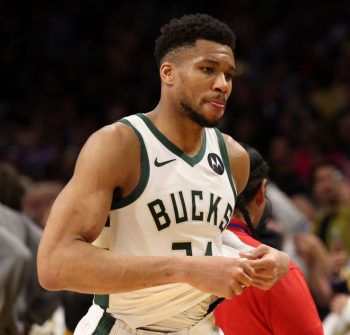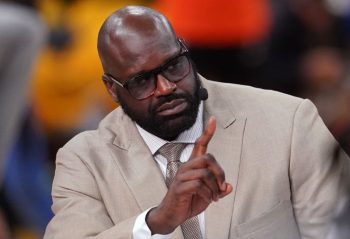NBA
What Does Charlotte Do Without LaMelo Ball?

LaMelo Ball was the odds-on favorite to win Rookie of the Year. He still very well may win the award, but his rookie season is likely finished after just 41 games.
Ball fractured his right wrist on Saturday against the Los Angeles Clippers. While Ball hasn’t been officially ruled out for the year, he probably won’t return to the court this season, according to ESPN.
It’s hard to see a silver lining when a team’s best player goes down for the season – but they do, in fact, exist.
First of all, celebrate the Charlotte Hornets’ luck and/or decision-making. Ball has been really good, to put it lightly, averaging 15.9 points, 6.1 assists and 5.9 rebounds over 28.6 minutes per game – and he’s been even better as a starter.
Granted, the Hornets had the luxury of selecting third, meaning that in a draft with three noteworthy players, a decision was made for them – and it worked out for the absolute best. Anthony Edwards and James Wiseman both look great, but Ball has been extra-special for two key reasons – his vision has been even better than advertised, and his three-point shot is significantly more advanced than expected (37.5%).
He’s not only the readiest to impact the game now, but Ball also has the highest ceiling.
But it’s a short victory lap for the Hornets, who have their work cut out for them – beginning immediately.
Charlotte is currently in sixth place in the Eastern Conference and just two games ahead of the tenth place-slated Indiana Pacers. They signed Gordon Hayward this past offseason, indicating they’re ready to try to win some games – so the Hornets need to make some tough decisions.
With or without Ball, the Hornets will benefit from a playoff run. And even if they don’t qualify, the Hornets will get much-needed experience down the stretch of the regular season or via the play-in tournament. Remember, there are young guys on the Hornets who have never been to the postseason (e.g., Miles Bridges, PJ Washington and Devonte’ Graham).
But at least as important as experience is the opportunity to take stock of their roster. There are major decisions that must be made. Without Ball in the lineup, the Hornets can decide who to build around, and who to let walk or trade. So here are three decisions the Hornets should make as soon as possible.
Figure out what you have in Vernon Carey Jr.
Carey Jr. was a relatively high second-round pick (32nd overall) in 2020. And despite the fact that the Hornets are still in a quasi-rebuild, Carey Jr. is receiving just 3.7 minutes per game with the NBA club.
Yes, he’s undersized (6-foot-9, 270 pounds), but the kid has potential. He averaged 17.8 points per game last season at Duke, posting six 25 and 10 games – numbers that include a 26-point and 17-rebound effort against Pitt and 31 and 12 against California.
NCAA performances don’t always translate, but Carey Jr. has also impressed in the G League, averaging 16 points and 9.4 rebounds per game in 14 games. He’s run the floor, displayed good footwork and shown a decent mid-range shot.
There’s really no pressure to do anything with Carey Jr. immediately, but why not learn more about him now? He has to be tested at some point, plus his build and skillset appear to translate nicely. Use the remainder of what looks to be the last throwaway season for a while to find.
Decide what to do with Terry Rozier and Devonte’ Graham
Rozier or Graham are both quality NBA players. But they’re also both creators, so playing either alongside Ball leaves the Hornets vulnerable to the better backcourts in the NBA. Considering LaMelo Ball is obviously the Hornets’ point guard of the future, they’ll need to devise a plan.
Of course, Charlotte can keep all three (Ball, Rozier and Graham) – although playing all three together is nearly impossible given the height of Rozier and Graham (both 6-foot-1).
Further, keeping both means fewer minutes for Malik Monk. But there’s pretty clearly not a need for three, 6-foot-2 (or smaller) guards on a roster when none of them are your true cornerstone point guard.
Ideally, this decision could be made over the remainder of the season, but Graham’s salary comes off of the Hornets’ books following it – meaning that a trade is only viable through Thursday. Meanwhile, Rozier is signed through the end of 2021-22.
What to do with Malik Monk
Monk was a highly-touted prospect out of Kentucky in 2011, when he was the 11th pick in the NBA Draft. Fast forward to 2021 and the Hornets’ backcourt is over-crowded. More often than not, Monk has been the odd man out.
Monk is playing 21.3 minutes and scoring 12.3 points per game on 41.8% on three-point attempts. That works out to 20.9 points, 4.6 rebounds and 3 assists per-36 minutes.
At 6-foot-3 and 200 pounds, Monk is an undersized shooting guard and an average defender. He appears to be best suited as a sixth man who can score off the bench. Charlotte, like any other team, needs a bench. But, as discussed above, there are more than enough undersized guards on the Hornets roster.
So the question must be asked – is Monk part of Charlotte’s future? He’s received inconsistent playing time all season. He didn’t play at all in any of the team’s first 17 games. Since then, his time has varied, playing at little as 13 minutes and as many as 31.
Monk can play a role in Charlotte. The question is: do the Hornets want him to? They’ll have to figure this one out relatively quickly, too, as Monk is due a qualifying offer for 2021-22 ($7.3 million).
It’s unfortunate that Ball will miss the remainder of his rookie season for everyone – himself, the team and the fans. But the Hornets should see it as the opportunity it is – no more pressure, no more expectations. They can get down to brass tacks, prioritizing future pieces, identifying needs and – if they’re shrewd enough — trading away redundant pieces.
Charlotte was already on the come-up, Ball’s injury doesn’t affect that. But there is work to do now, and it should start over the next few days.











